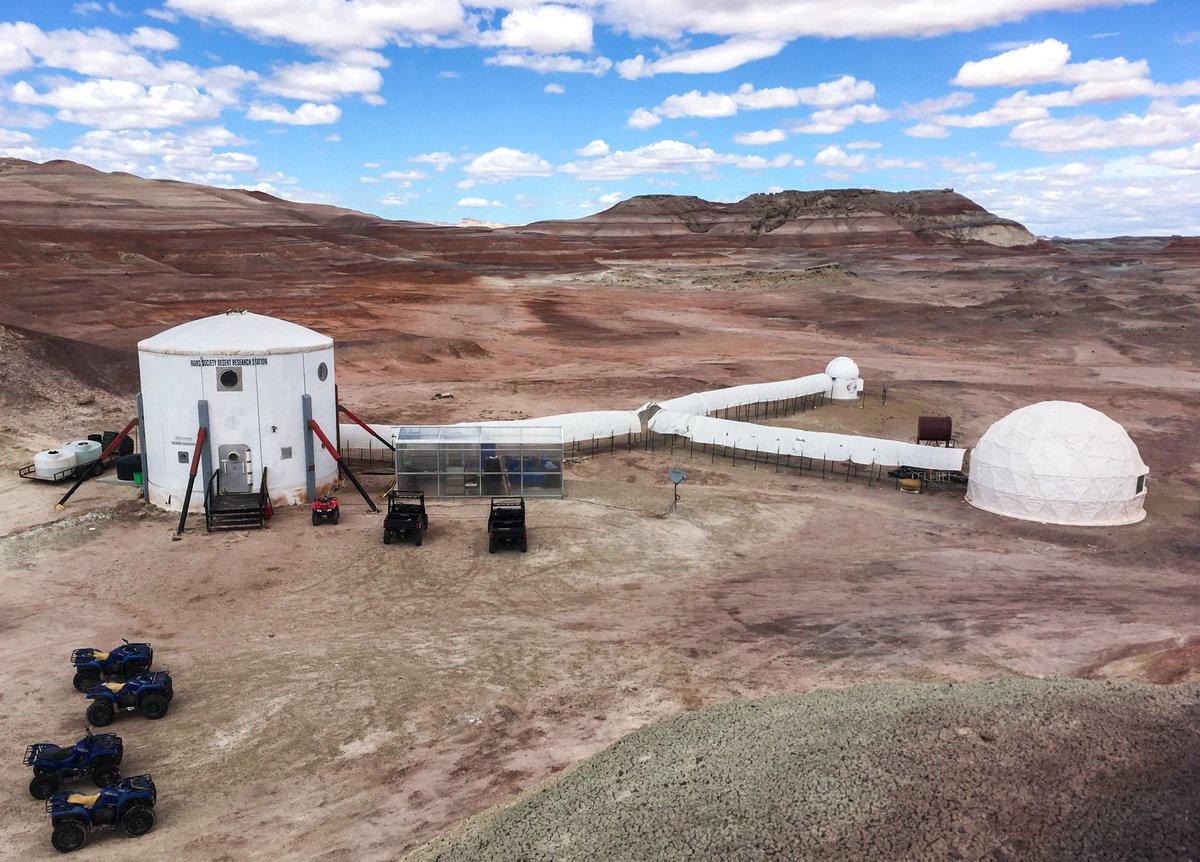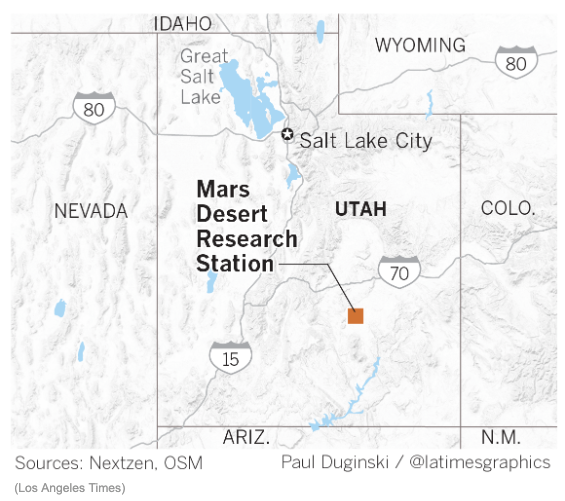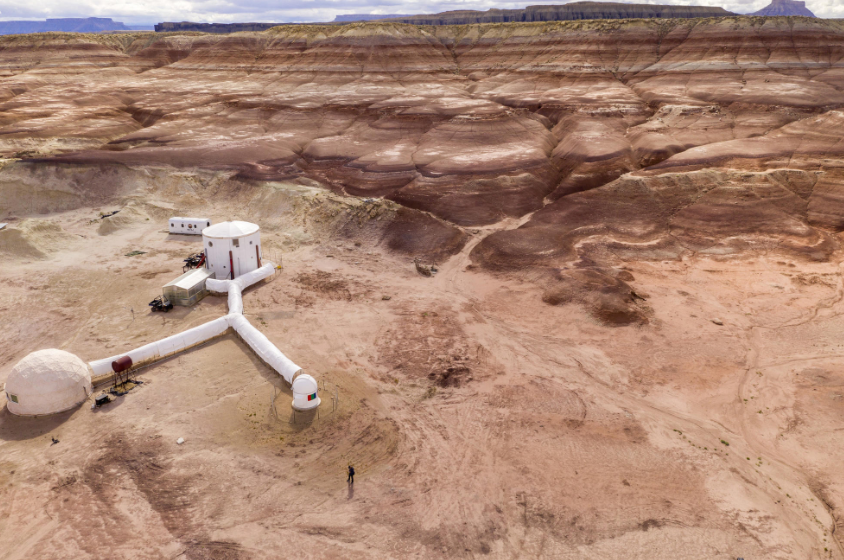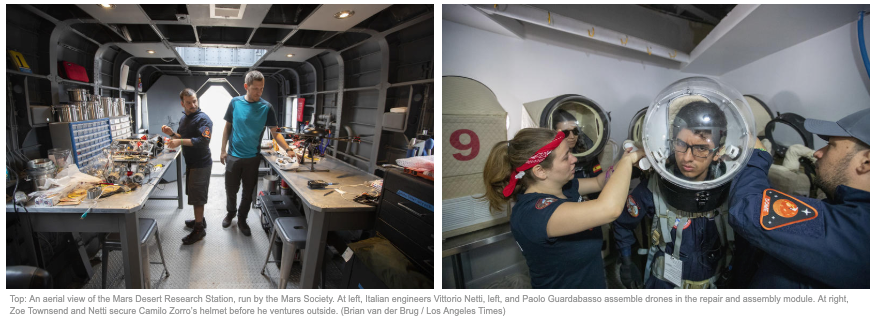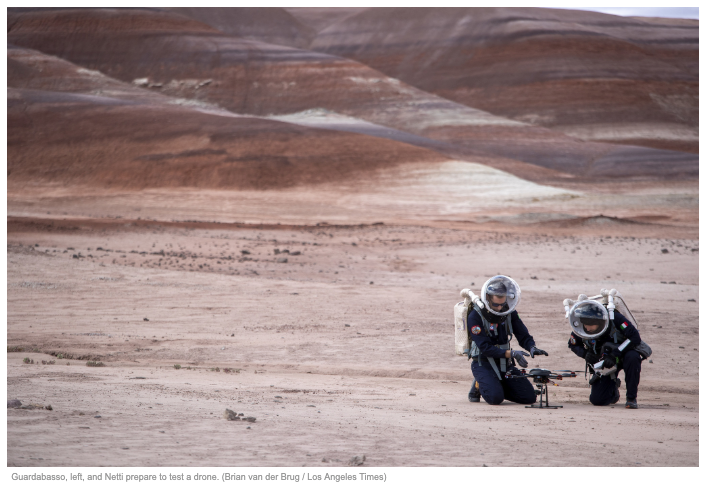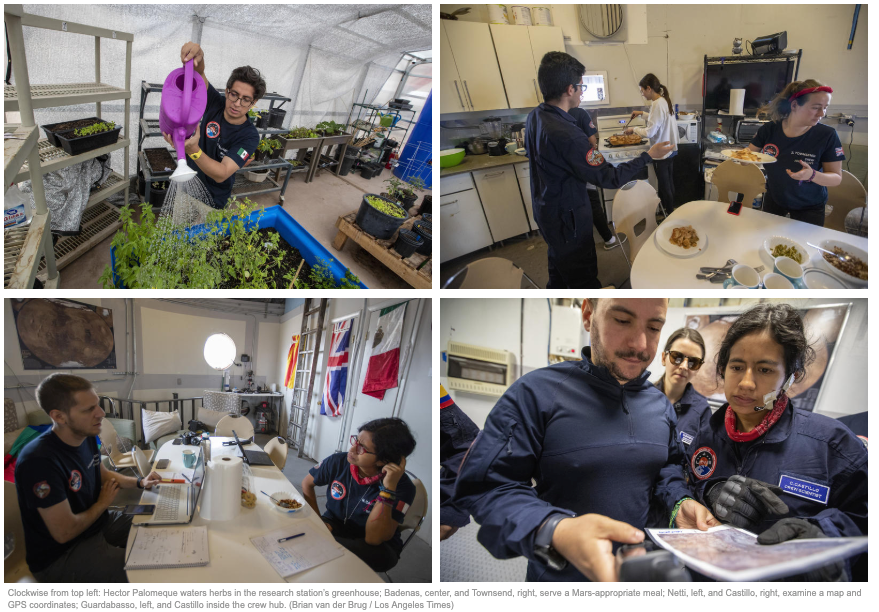Since 2001, the Mars Desert Research Station (MDRS), a facility simulating Mars analog habitat owned by the Mars Society, has allowed thousands of space enthusiasts from countries around the world to put on a makeshift spacesuit and live in a space station for an extended period, reported the Los Angeles Times.
The station was built near Hanksville, Utah, in the early 2000s, and is visited by engineers, physicians, geologists, astronomers, and biologists.
NASA aims to send astronauts to Mars by 2033, and the buzz about commercial space travel has made MDRS much more popular than ever before.
Last month, 500 college students from ten countries gathered at MDRS for the annual University Rover Challenge, designed at developing space vehicles for use on Mars.
“I could run two of these programs side by side, and there would still be a demand,” said station director Shannon Rupert.
“You no longer have to work at NASA to go into space, and a lot of people want to go into space.”
Many of the visitors are forking over $1,500 per person for a two-week stay. Each visitor can perform their own experiments as long as they observe one protocol: don’t leave the station without a spacesuit.
MDRS includes a two-story habitat, a greenhouse, a robotic observatory, an engineering pod, and a science dome. Above-ground walkways connect all buildings except the robotic observatory allow crews to travel between buildings without a spacesuit.
Camila Castillo, a 23-year-old biologist from Peru, was on her second mission when the Times interviewed her. She said she was made commander of a seven-person team.
“As commander my role is to keep people calm,” she explained. “We are all passionate, but I must make sure we observe the protocols.”
Two Italian engineers, Vittorio Netti, 29, and Paolo Guardabasso, 27, spent their time operating a drone that could one day fly on Mars.
“We can use them to photograph the area around the station in a short time rather than send people out on potentially dangerous missions,” Netti said.
One of the walkways led the Times to the greenhouse was overseen by Hector Palomeque, a 28-year-old from Mexico who investigates life in harsh climates.
“The first people on Mars will be more farmers than astronauts,” Palomeque said.
Mariona Badenas, 25, of Spain, was in command of a special telescope that allowed her to look at the sun’s chromosphere.
“Observing the sun on Mars would be critical to understanding how it would affect the crew and possibly interfere with communications,” she said.
The creator of the MDRS is 67-year-old, Robert Zubrin, the president of Mars Society and owner of Pioneer Astronautics in Lakewood, Colorado.
Zubrin, a nuclear engineer and NASA contractor, told the Times he believes a trip to Mars could be completed today in six months with existing technology.
“NASA had plans in 1969 to land on Mars by 1981; then Nixon canned the whole thing. We had a total failure of leadership,” he said. “If that plan had carried through, we would have landed on Mars in 1981, had a permanent base on Mars by the late 1980s, and the first children born on Mars would be graduating from high school this June. That was the future not taken.”
MDRS recently received donations from SpaceX founder Elon Musk.
Musk in a series of cryptic tweets around 4:20 pm Sunday hinted at his plans on colonizing the red plant
“Accelerating Starship development to build the Martian Technocracy,” Musk tweeted on Sunday.
About an hour later around 5 pm, he tweeted “OCCUPY MARS” and an image of the moon.
Mars seems like the next place where humans will travel in the next decade.
via ZeroHedge News https://ift.tt/2Njb7py Tyler Durden
